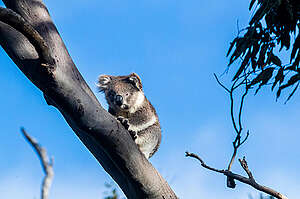We’ve been celebrating an enormous win over the past few days. More than one-third of Canada’s Great Bear Rainforest — the largest intact area of temperate rainforest in the world — is officially and legally off-limits to logging. It’s an area half the size of Switzerland.
One person who’s especially jubillant at the news is Tamara Stark. Tamara cut her teeth as a Greenpeace campaigner working to protect this forest.
“It was back in 1997 when we first started working to stop the destruction of the Canadian rainforest, which is amongst the longest-lived forests in the world,” says Tamara. “It contains trees that can grow to be over 1000 years old, with healthy populations of grizzly bears and the white spirit bears also calling it home.”
“Clearcutting, a logging practice that fells trees in a given area, was common practice then, and we’d already lost a lot of the forest when Greenpeace and our allies decided enough was enough. The logging companies were firmly entrenched and not prepared to give up what were some of the most economically valuable forests in the world.”
It was the beginnning of a campaign that lasted over a decade, and involved a number of lawsuits from the logging companies.
“The logging companies sued us a nuimber of times, in lawsuits naming both Greenpeace as well as some of us individually (which really freaked out my mother, I have to say!). At one point, the premier of the province called Greenpeace ‘an enemy of British Columbia’, while at the same time the leading newspaper said we were ‘on the side of the angels’ for stopping the clearcutting.”
After about 5 years of struggle, they finally won a temporary halt to logging the intact rainforest valleys, and a land-use planning process got underway.
“It’s taken another five or six years to produce the best possible scientific analyses and to negotiate with the logging companies and unions to agree to protect large tracts of the rainforest. Greenpeace worked with other environmental groups to raise $120 million to help enable First Nation communities to kick-start a conservation economy as an alternative to logging – something we don’t often do, but found necessary in this case to support the local communities’ development.”
“To the very best of our understanding, this is the most stringent conservation model in the world, and one we hope can be advanced elsewhere – because it’s pretty obvious we still have a lot to do in places such as Indonesia, the Amazon and the Congo! But for the Great Bear Rainforest, today let’s breathe a sigh of relief and savour this moment.”

